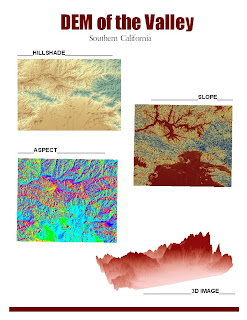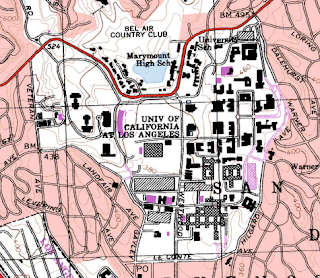
Depicted above is a collections of cloropleth maps based on data collected from the Census in the year 2000. Each map shows the percent population of various races: Asian, Black, and 'Other'. The first map, portraying the distribution of the Asian-American population, is colored in shades of yellow, darkening in the areas that have a high density of Asian population. We can see that the outermost edges of the East and West coasts have the highest density Asian population from the brown hues that surround cities such as San Fransisco, Seattle, and New York. This distribution may result from the immigration tendencies in the 19th century. The East and West coasts of America were easiest to access from the homelands of Asian immigrants. As more people arrived, many tended to reside in communities with already-well established Asian communities which therefore increased the density of the population in the specific geographic location.
In contrast, the graph in the middle depicts the density of the African-American population. The darker shades of gray show that the bulk of the African-American reside in the southern half of America. This phenomena likely results from the existence of plantations in the past. The geographic locations of current-day African-American population coincide with the major areas of slavery existence. Although slavery ended, the African-Americans seemed to remain the the same general area. From this map, we can also conclude that blacks make up one of the largest groups of minorities, with the highest percentage of African-Americans in one county reaching up to the high 80's.
The third and last map displays the population density of people who checked the 'other' choice in the racial inquiry of the census. Although this choice leaves an ambiguity in the data set, it does show the population distribution in terms of diversity. The western portion of the country seems to consists of a larger degree of racial diversity, appearing on the map as a darker shade of teal that represents a higher percentage of people that identify themselves as 'other'. In addition, information that revolves around the effects of various degrees of diversity may be suggested by the map. For instance, the correlations between cultural shifts and diversity or tolerance and diversity may be useful in many types of social studies.
One limitation of the maps shown above is that they consist only of values attained from the 2000 census. It would be interesting to show the geographical spreads based on race over extents of time that fall under the 10-year census mark. However, the limitation of time and resources make collecting good data to be quite difficult. Nevertheless, as demonstrated in this lab, cloropleth maps are incredibly useful in extracting or displaying information. Although this lab focuses mainly on the racial distribution of America, cloropleth maps may be created to cover a wide array of data types. In general, GIS can be used to present a wide array of topics. This flexibility makes using it very useful in multiple applications. In addition, GIS creates a simple, straight-forward way to visualize complete data. Data, which would be lists of mere numbers, can be presented as a map to convey a certain point. Through my creation of mash-ups, my comparisons of map projections, and my many other experiences with GIS in this Geography 7 course, I have realized the versatility and significance of maps. I have also come to better understand the workings of a geographer.






